#Gerald Eichstädt
Explore tagged Tumblr posts
Text
A recent image of Jupiter captured by Juno spacecraft.
Process on an image processed by Gerald - Enhancement of colors
NASA / JPL / SwRI / MSSS / Gerald Eichstädt / Thomas Thomopoulos
More: missionjuno.swri.edu/junocam/proces…

#nasa#nasa photos#nasa jpl#jpl#SwRI#msss#Gerald Eichstädt#Thomas Thomopoulos#Process on an image processed by Gerald - Enhancement of colors#More: missionjuno.swri.edu/junocam/proces…#jupiter#captured by Juno spacecraft#cosmos#Unknown cosmos and unexplored space#de tot#xpuigc#xpuigc bloc
18 notes
·
View notes
Text
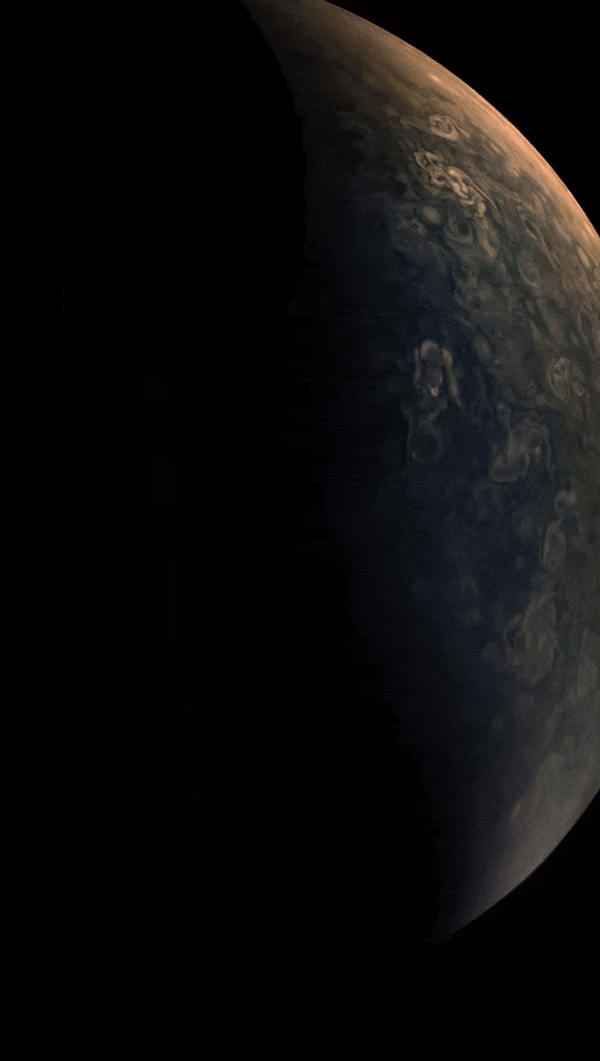
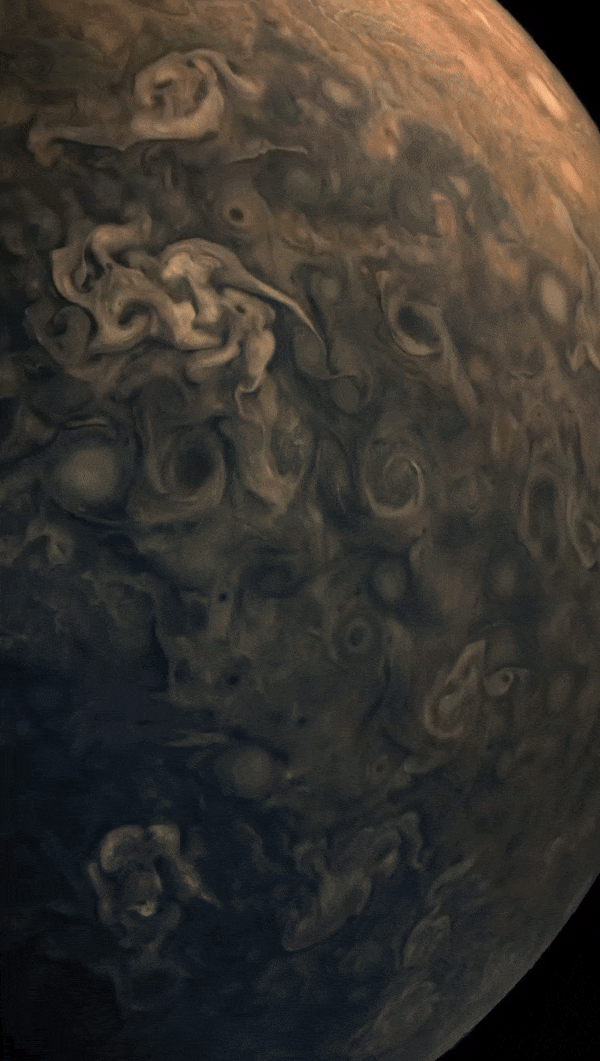



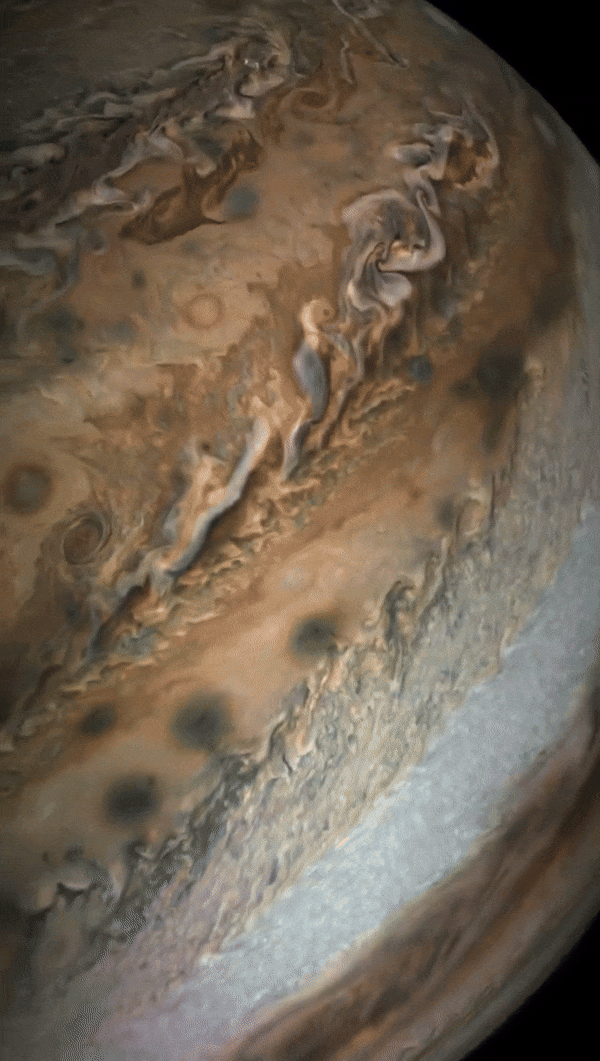
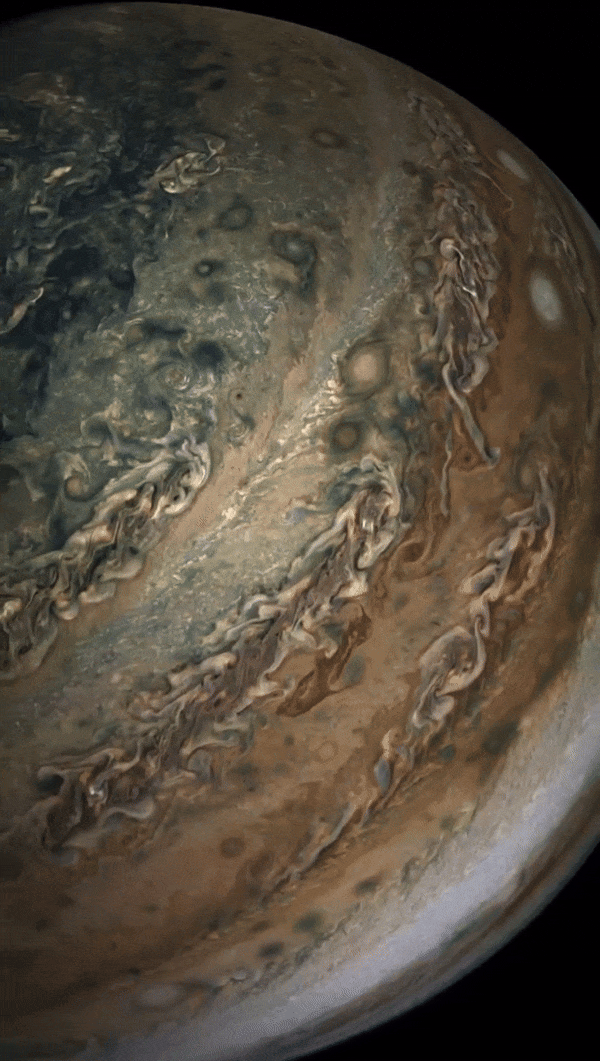
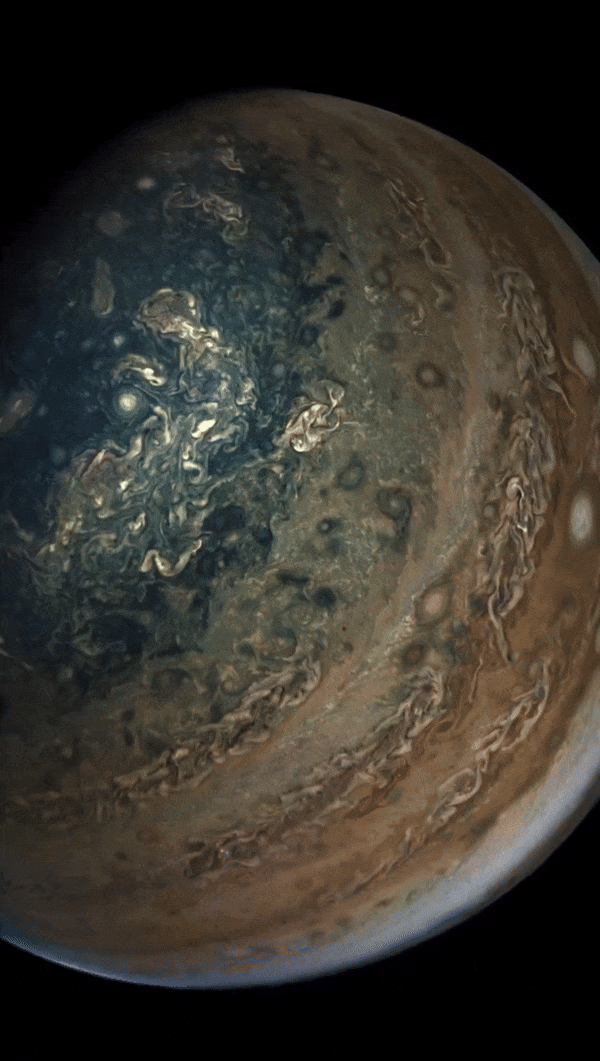
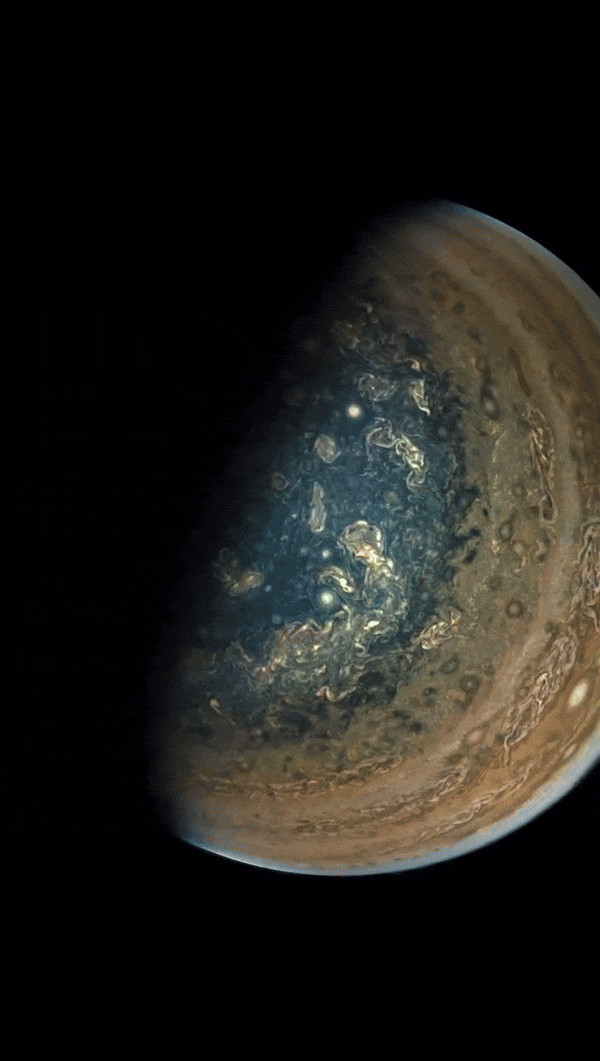
Stunning images of Jupiter captured by the Juno spacecraft during a close flyby in October 2018. (credit: NASA/JPL-Caltech/SwRI/MSSS/Gerald Eichstädt)
452 notes
·
View notes
Text

Image captured by Juno during its 66th perijove, then further processed with color enhancement by Gerald Eichstädt and Thomas Thomopoulos
NASA / JPL / SwRI / MSSS / Gerald Eichstädt / Thomas Thomopoulos CC BY 3.0
11 notes
·
View notes
Text

NASA's Juno spacecraft snaps images of Jupiter and catches the tiny moon Amalthea as it orbits the planet. Credit: NASA / JPL-Caltech / SwRI / MSSS / Gerald Eichstädt
9 notes
·
View notes
Text

Study shows how amateur astronomers can aid in Jupiter weather monitoring
Jupiter's striking appearance comes from its stormy atmosphere. Swirling clouds surround the gas giant, and their distribution reflects the planet's weather. Scientists have used professional observatories such as the Very Large Telescope in Chile (whose construction in the 1990s cost more than 330 million euro, or US$366 million) and spacecraft such as the Juno orbiter (part of a US$1.13 billion mission) to study Jupiter's meteorology, but they lack some ongoing monitoring abilities. Amateur astronomers have filled in part of this gap by monitoring visible clouds and wind.
Now, in a paper published in Earth and Space Science, Hill and colleagues show that the chemical tracers of Jupiter's weather can be observed using relatively inexpensive equipment, which may allow amateur astronomers to contribute even more to scientific knowledge of the planet's conditions.
Unlike Earth's water-based clouds, Jupiter's topmost clouds are thought to be primarily made of ammonia ice; the atmosphere's ammonia content is indicative of the planet's weather. Ammonia absorbs red light at a wavelength of 647 nanometers. Methane, whose abundance is both fixed and well known to scientists, absorbs orange light at a wavelength of 619 nanometers.
Using a commercially available telescope priced at around US$4,000, the researchers took pictures of Jupiter and looked for spots where there was increased absorption at 647 relative to 619 nanometers, indicating increased ammonia abundance at those locations. They could then calculate the abundance of ammonia using the ratio of these absorptions and the known, unchanging abundance of methane.
This study showed changes in ammonia distribution over timescales ranging from weeks to years, but scientists need more data to understand what these changes mean. The authors say they hope amateur astronomers can use this method to help collect and share more data and that this increased workforce can allow for weekly or even daily monitoring of Jovian weather.
IMAGE: Jupiter. Credit: Enhanced image by Gerald Eichstädt and Sean Doran (CC BY-NC-SA) based on images provided courtesy of NASA/JPL-Caltech/SwRI/MSSS
3 notes
·
View notes
Text

NASA's Juno mission had depicted high-altitude electrical storms on Jupiter during close flybys of the gas giant and detected unusual lightning flashes on Jupiter's dark side 🛰
📷: NASA/JPL-Caltech/SwRI/MSSS/Gerald Eichstädt/Heidi N. Becker/Koji Kuramura
4 notes
·
View notes
Photo
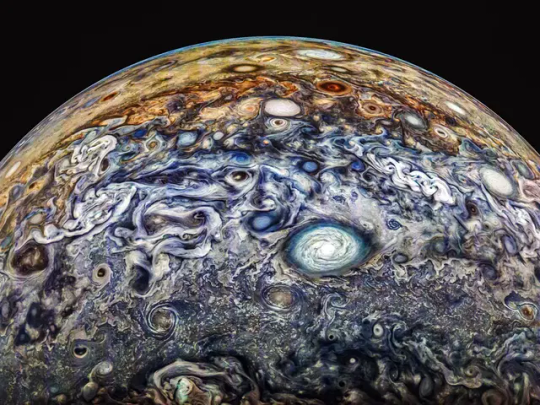
"Image captured by Juno during its 66th perijove, then further processed with color enhancement by Gerald Eichstädt and Thomas Thomopoulos. NASA / JPL / SwRI / MSSS / Gerald Eichstädt / Thomas Thomopoulos CC BY 3.0"
0 notes
Photo


The tempests of Jupiter visualized by Kevin M. Gill (top) and Gerald Eichstädt, Heidi N. Becker, and Koji Kuramura (bottom) based on data from the Juno space probe. Click the source link to learn more.
#jupiter#juno mission#koji kuramura#heidi n becker#gerald eichstädt#kevin m gill#astronomy#gas giant#lightning
164 notes
·
View notes
Photo

Gerald Eichstädt and Seán Doran, using data from the JunoCam imager on NASA’s Juno spacecraft.
100 notes
·
View notes
Video
tumblr
kaos ve tanrının bilmem kaçıncı eseri.
#NASA / SwRI / MSSS / Gerald Eichstädt / Seán Doran#benimpost#NASA#junocam#nasa juno#juno#jupiter#jupitor flyby
85 notes
·
View notes
Photo

Dark vortex of Jupiter. Credit: NASA/JPL-Caltech/SwRI/MSSS/Gerald Eichstädt/Seán Doran via /r/spaceporn https://ift.tt/2p0sNeq
1 note
·
View note
Text
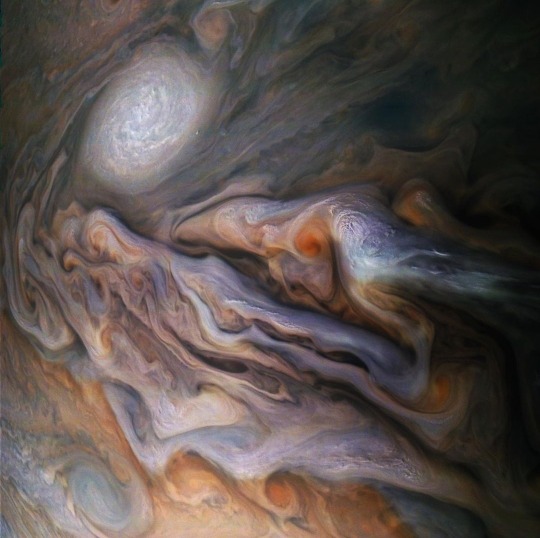
It's a latte bigger than Earth. ☕
This picture isn’t from your local coffee shop, it’s from our spacecraft Juno as it passed by Jupiter. Jupiter is well known for its Great Red Spot, but it’s also home to anticyclonic storms, known as white ovals. White oval’s can be storms the size of earth and can generate winds up to 335 miles per hour (539 kilometers per hour) and some storms can reach 60 miles (100 kilometers) tall.
Jupiter is strapped with “belts” of white and red, that wrap around the planet. Traveling both east and west, why these belts are distinct is something mystery to scientists, one possibility is that the ammonia gas in the atmosphere travels up and down in alignment with the planets jet streams.
Juno’s prime mission of measuring and studying Jupiter’s atmosphere and magnetic structure was completed in 2021, but it will continue to measure the planet’s unique structure until at least 2025. This image was color enhanced by citizen scientists Gerald Eichstädt and Sean Doran.
Credit: Enhanced Image by Gerald Eichstädt and Sean Doran (CC BY-NC-SA)/NASA/JPL-Caltech/SwRI/MSSS)
#nasa#jupiter#NASA#astrophotograpy#Juno#space#JunoCam#MissionJuno#storm#clouds#planet#planets#solar system#gassy
224 notes
·
View notes
Photo
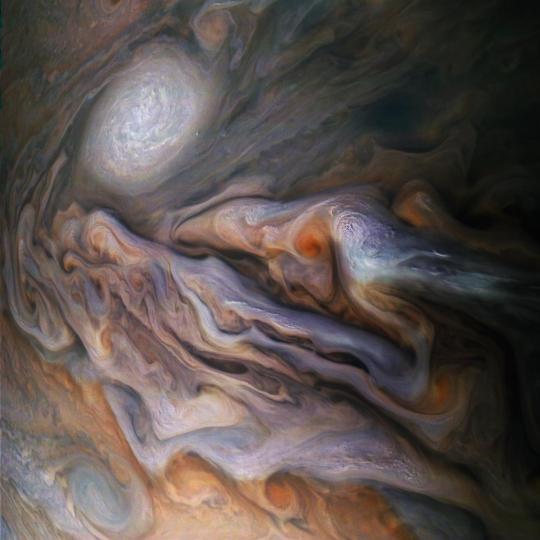
Clouds swirling in the coffee colored atmosphere of Jupiter, looks more like a familiar morning beverage of champions.
This image from our Juno spacecraft was captured in North North Temperate Belt. Image Credit: Enhanced Image by Gerald Eichstädt and Sean Doran (CC BY-NC-SA)/NASA/JPL-Caltech/SwRI/MSSS
Make sure to follow us on Tumblr for your regular dose of space: http://nasa.tumblr.com
#NASA#space#science#solar system#Jupiter#Juno#coffee#calm#calming#space pictures#space background#hazyview
7K notes
·
View notes
Video
youtube
2021 October 11
Juno Flyby of Ganymede and Jupiter Video Credit: Images: NASA, JPL-Caltech, SWRI, MSSS; Animation: Koji Kuramura, Gerald Eichstädt, Mike Stetson; Music: Vangelis
Explanation: What would it be like to fly over the largest moon in the Solar System? In June, the robotic Juno spacecraft flew past Jupiter's huge moon Ganymede and took images that have been digitally constructed into a detailed flyby. As the featured video begins, Juno swoops over the two-toned surface of the 2,000-km wide moon, revealing an icy alien landscape filled with grooves and craters. The grooves are likely caused by shifting surface plates, while the craters are caused by violent impacts. Continuing on in its orbit, Juno then performed its 34th close pass over Jupiter's clouds. The digitally-constructed video shows numerous swirling clouds in the north, colorful planet-circling zones and bands across the middle -- featuring several white-oval clouds from the String of Pearls, and finally more swirling clouds in the south. Next September, Juno is scheduled to make a close pass over another of Jupiter's large moons: Europa.
∞ Source: apod.nasa.gov/apod/ap211011.html
50 notes
·
View notes
Photo

Jovian ‘Twilight Zone'
‘This image captures the swirling cloud formations around the south pole of Jupiter, looking up toward the equatorial region.
NASA’s Juno spacecraft took the color-enhanced image during its eleventh close flyby of the gas giant planet on Feb. 7 2018 at 7:11 a.m. PST (10:11 a.m. EST). At the time, the spacecraft was 74,896 miles (120,533 kilometers) from the tops of Jupiter’s clouds at 84.9 degrees south latitude.‘
Source: NASA/JPL-Caltech/SwRI/MSSS/Gerald Eichstädt
165 notes
·
View notes
Photo

Jupiter is a hallucinogenic trip into reality's possibilities. image: Gerald Eichstädt @nasa https://www.instagram.com/p/CIBIlVbn35T/?igshid=vm210mcayvdo
124 notes
·
View notes